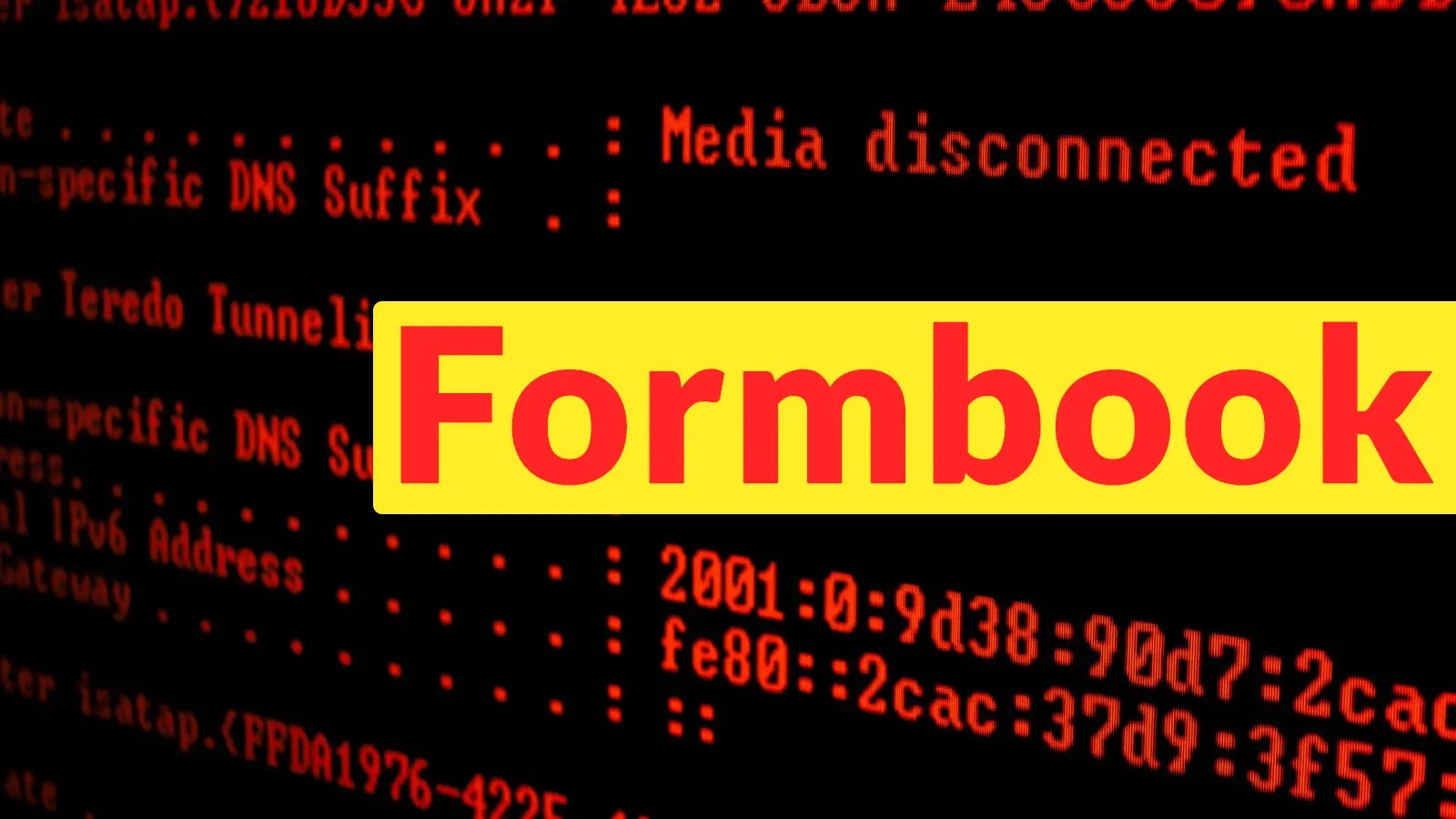
Formbook Malware Delivered Using Weaponized Zip Files and Multiple Scripts
The persistent threat landscape demands constant vigilance from cybersecurity professionals. A new wave of Formbook malware attacks highlights this critical need, demonstrating sophisticated tactics to bypass traditional security controls. These attacks leverage weaponized ZIP files and a multi-stage script delivery mechanism, making detection and prevention particularly challenging.
This report delves into the mechanics of these recent Formbook campaigns, offering insights into their execution and detailing actionable remediation strategies for organizations and individuals.
Understanding Formbook Malware
Formbook is an infamous information stealer actively circulating in the threat landscape since at least 2016. Its primary function is to harvest sensitive data from compromised systems. This includes, but is not limited to, login credentials, banking information, screenshots, and system data. Formbook’s capabilities extend to keylogging and remote control, making it a powerful and versatile tool for cybercriminals. Its effectiveness lies in its ability to evade antivirus detection and its widespread availability on underground forums.
The Attack Vector: Weaponized ZIP Files and Multi-Stage Scripts
The latest iteration of Formbook attacks initiates with a seemingly innocuous email. These phishing emails are carefully crafted to appear legitimate, often impersonating financial institutions or delivery services, and typically include an attachment. The key components of this attack chain are:
- Phishing Email: The initial point of contact, designed to trick recipients into opening the attached malicious file. These emails often carry urgent or misleading subject lines, such as “Payment Confirmation” or “Invoice Discrepancy.”
- Weaponized ZIP Archive: The phishing email contains a ZIP file attachment. While ZIP files are common for legitimate document exchange, in this case, they serve as the delivery mechanism for the initial stage of the attack.
- VBScript Disguise: Inside the ZIP file, victims find a Visual Basic Script (VBScript) masquerading as a legitimate document, often named something like “payment_confirmation.vbs” or “invoice_details.vbs.” The deceptive file name is crucial for social engineering.
- Multi-Stage Script Execution: When the VBScript is executed, it doesn’t directly install Formbook. Instead, it initiates a series of events:
- The VBScript often executes a PowerShell command or another scripting language.
- This subsequent script then contacts a Command and Control (C2) server to download additional malicious payloads.
- The final payload is the Formbook malware executable itself, which is then installed and begins its data exfiltration activities.
This multi-stage delivery mechanism adds layers of obfuscation, making it more challenging for security solutions to detect the malicious intent at the initial stage. Each stage can be dynamically modified by the attackers, further enhancing resilience against static signature-based detection.
Remediation Actions and Prevention Strategies
To effectively combat these Formbook campaigns and similar threats, a multi-layered security approach is essential. Here are actionable steps organizations and individuals can take:
For Organizations:
- Email Security Gateways: Implement robust email security solutions with advanced threat protection (ATP) capabilities. These solutions should be configured to scan attachments, detect suspicious links, and analyze email headers for signs of phishing.
- Endpoint Detection and Response (EDR): Deploy EDR solutions to monitor endpoint activity for suspicious processes, network connections, and file modifications. EDR can identify and respond to malicious activities even if the initial infection bypasses traditional antivirus.
- Security Awareness Training: Conduct regular and engaging security awareness training for all employees. Emphasize the dangers of phishing emails, the importance of verifying sender identities, and caution against opening unexpected attachments, especially ZIP files containing scripts.
- Network Segmentation: Implement network segmentation to limit the lateral movement of malware within the network in case of a breach.
- Patch Management: Ensure all operating systems, applications, and security software are routinely updated with the latest security patches. Vulnerabilities in software are often exploited by malware like Formbook.
- Whitelisting: Consider implementing application whitelisting policies to prevent unauthorized executables and scripts from running on endpoints.
- Incident Response Plan: Develop and regularly test an incident response plan to ensure a swift and effective response to any security incidents.
For Individuals:
- Be Skeptical of Emails: Always verify the sender of unexpected emails, particularly those with attachments or links. Hover over links to see the actual destination before clicking.
- Avoid Opening Suspicious Attachments: Never open ZIP files or other attachments from unknown or suspicious senders. Be especially wary of script files (e.g., .vbs, .js) within archives.
- Use Reputable Antivirus Software: Install and maintain up-to-date antivirus and anti-malware software on all devices.
- Enable File Extensions: Configure your operating system to show full file extensions, rather than hiding them by default. This can help reveal the true nature of malicious files disguised with common document icons.
- Regular Backups: Maintain regular backups of important data to an external drive or cloud service. This can help in data recovery if a ransomware or data-wiping malware attack occurs.
Relevant Tools for Detection and Mitigation
Several tools can aid in the detection, analysis, and mitigation of Formbook and similar threats:
| Tool Name | Purpose | Link |
|---|---|---|
| VirusTotal | Online service for analyzing suspicious files and URLs to detect malware. | https://www.virustotal.com/ |
| ANY.RUN | Interactive online sandbox for dynamic malware analysis. | https://any.run/ |
| Wireshark | Network protocol analyzer for capturing and inspecting network traffic, useful for detecting C2 communications. | https://www.wireshark.org/ |
| Sysinternals Process Monitor | Advanced monitoring tool for Windows that shows real-time file system, Registry, and process/thread activity. | https://docs.microsoft.com/en-us/sysinternals/downloads/procmon |
| Snort | Open-source network intrusion detection and prevention system (IDS/IPS). | https://www.snort.org/ |
Conclusion
The evolving tactics of Formbook malware, particularly its use of weaponized ZIP files and multi-stage script delivery, underscore the adaptability of cybercriminals. Organizations and individuals must prioritize robust cybersecurity defenses, combining advanced technical solutions with continuous security awareness training. Proactive monitoring, timely patching, and a well-defined incident response strategy are fundamental to mitigating the risks posed by sophisticated information stealers like Formbook. Stay informed, stay vigilant, and stay secure.





